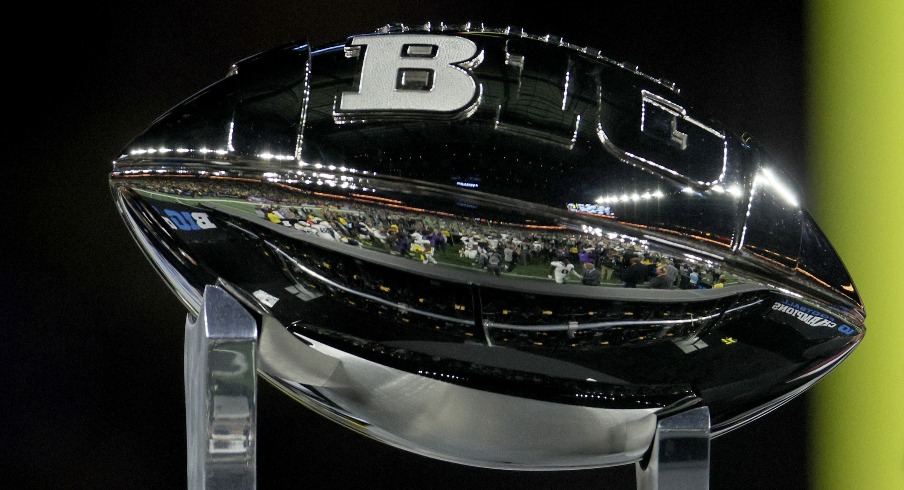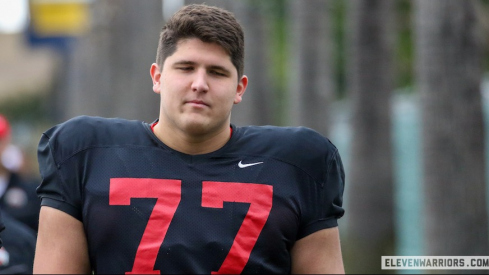Tiebreakers will be more crucial than ever before in determining Big Ten Championship Game participants going forward.
The conference is expanding to 18 teams with the additions of Oregon, UCLA, USC and Washington this season and abandoning the two-division structure it had employed since 2012. There's never been a higher likelihood that two or more teams will be tied for a spot in the Big Ten Championship Game.
On Monday, the Big Ten announced its tiebreaking procedures for the 2024 season just three days before Rutgers opens the season for the conference against Howard.
The head-to-head result between the two tied teams was the obvious first place to go, and that will be the main decider in any tiebreaking scenario. In the case of a two-way tie where the teams did not meet during the regular season, the records of the two tied teams against common conference opponents will be the next tiebreaker.
Should the schools remain tied, there are two more tiebreakers based on performance against and quality of conference opponents, then the team with the highest team rating score metric according to SportSource Analytics. If all else fails, a random draw will be held.
Ties between three or more squads work through a sort of process of elimination. If two or more teams are tied ahead of a given team for a given tiebreaker, that given team is eliminated from contention. Head-to-head record between all teams in the tie is again the top tiebreaker here, and on down the list it follows similarly to the same procedures of a two-school deadlock.
The full Big Ten tiebreaker procedures are summarized below.
If two teams are tied:
- If two teams are tied for the No. 1 position in the standings, both teams will participate in the championship game and the winner of the game between the two teams shall be the first-place team. If the two teams tied for the No. 1 position did not play, move to step 3 below to determine the first-place team.
- If two teams are tied for the No. 2 position in the standings, the winner of the game between the two tied teams shall be the representative. If the two teams did not play, move to next step in tiebreaker.
- The records of the two tied teams will be compared based on record against all common conference opponents.
- The records of the two tied teams will be compared based on record against common opponents with the best conference record and proceeding through the common conference opponents based on their order of finish within the conference standings.
- The records of the two tied teams will be compared based on the best cumulative conference winning percentage of all conference opponents. In the event of an unbalanced schedule (i.e., less than nine conference games are played), the records of the two tied teams will be compared based on the best cumulative conference winning percentage of all conference opponents, regardless of how many conference opponents each team played.
- The representative will be chosen by the highest ranking by SportSource Analytics (team Rating Score metric) following the regular season.
- Random draw among the tied teams conducted by commissioner or designee.
If three or more teams are tied:
-
The records of the three (or more) tied teams will be compared based on winning percentage in games among the tied teams:
- If all teams involved in the tie did not play each other, but one team defeated all other teams involved in the tie, the team that defeated all other teams in the tie is removed from the tiebreaker, and the remaining teams revert to the beginning of the applicable tiebreaker process (i.e., two team or three or more team tie).
- If all teams involved in the tie did not play each other and no team defeated all other teams involved in the tie, move to the next step in tiebreaker.
- The records of the three (or more) tied teams will be compared based on winning percentage against all common conference opponents played by all other teams involved in the tie.
- The records of the three (or more) tied teams will be compared based on winning percentage against the next highest placed common opponent in the standings in order of finish:
- The records of the three (or more) tied teams will be compared based on the best cumulative conference winning percentage of all conference opponents: (a) In the event of an unbalanced schedule (i.e., less than nine conference games are played), the records of the three (or more) tied teams will be compared based on the best cumulative conference winning percentage of all conference opponents, regardless of how many conference opponents each team played. If winning percentage is equal for all conference opponents, move to next step in tiebreaker.
- The representative will be chosen by the by the highest ranking by SportSource Analytics (team Rating Score metric) following the regular season.
- Random draw among the tied teams conducted by commissioner or designee.


